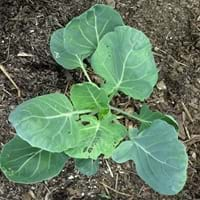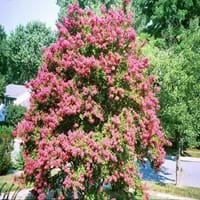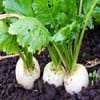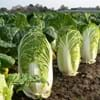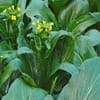Life Span
Biennial
Perennial
Origin
Southern Europe, Western Europe, Mediterranean
Hybrid origin
Types
Wild cabbage, Cabbage, Savoy cabbage
Lagerstroemia villosa, Lagerstroemia subcostata, Lagerstroemia microcarpa
Number of Varieties
Not Available
Habitat
Fertile bottom land, Moist Soils, Well Drained
Coastal Regions, Open Forest, Swamps
USDA Hardiness Zone
4-8
6-10
Sunset Zone
A1, A2, A3, H1, H2, 1a, 1b, 2a, 2b, 3a, 3b, 4, 5, 6, 7, 8, 9, 10, 11, 12, 13, 14, 15, 16, 17, 18, 19, 20, 21, 22, 23, 24
H1, H2, 7, 8, 9, 10, 12, 13, 14, 18, 19, 20, 21
Habit
Upright/Erect
Upright/Erect
Flower Color Modifier
Bicolor
Bicolor
Fruit Color
Not Available
Green, Brown
Leaf Color in Spring
Not Available
Dark Green, Burgundy
Leaf Color in Summer
Green
Dark Green, Burgundy
Leaf Color in Fall
Green
Burgundy, Dark Red
Leaf Color in Winter
Green
Not Available
Leaf Shape
Broad, Unlobed
Cylindrical
Plant Season
Spring, Summer, Fall, Winter
Spring, Summer, Fall, Winter
Sunlight
Full Sun, Partial Sun
Full Sun, Partial Sun
Type of Soil
Loam, Sand
Clay, Loam
The pH of Soil
Neutral
Acidic, Neutral
Soil Drainage
Well drained
Well drained
Bloom Time
Late Spring, Early Summer, Summer
Summer, Late Summer
Tolerances
Drought
Drought, Soil Compaction
Where to Plant?
Container, Ground
Ground
How to Plant?
Seedlings, Transplanting
From bulbs, Seedlings, Seperation, Stem Planting
Plant Maintenance
Medium
Medium
Watering Requirements
Average Water Needs, Keep ground moist, Needs a lot of water initially, Needs watering once a week, Never Over-water
Needs watering once a week, Requires watering in the growing season
In Summer
Lots of watering
Lots of watering
In Spring
Moderate
Moderate
In Winter
Average Water
Average Water
Soil pH
Neutral
Acidic, Neutral
Soil Type
Loam, Sand
Clay, Loam
Soil Drainage Capacity
Well drained
Well drained
Sun Exposure
Full Sun, Partial Sun
Full Sun, Partial Sun
Pruning
Prune lower leaves, Remove damaged leaves, Remove dead branches, Remove dead leaves
Prune if you want to improve plant shape, Prune to stimulate growth, Remove damaged leaves, Remove dead branches, Remove dead leaves
Fertilizers
5-10-10 fertilizer, All-Purpose Liquid Fertilizer, Apply 10-10-10 amount
fertilize every 2-3 weeks while growing, fertilize in growing season, Requires high amount of nitrogen
Pests and Diseases
Red blotch
Beetles, Insects, Powdery mildew, Red blotch
Plant Tolerance
Drought
Drought
Flower Petal Number
Single
Single
Fragrant Bark/Stem
Yes
No
Foliage Texture
Bold
Medium
Foliage Sheen
Matte
Glossy
Allergy
allergic reaction, breathing problems, Dizziness, Headache, Itchiness, Low blood pressure, Runny nose, Skin rash, Stomach pain, Swelling
allergic reaction, Asthma
Aesthetic Uses
Not Used For Aesthetic Purpose
Beautification, Cottage Garden, Landscape Designing, Showy Purposes
Beauty Benefits
Good for skin
Not Available
Environmental Uses
Air purification
Air purification, Food for birds, Food for insects, Nesting sites for birds, Prevent Soil Erosion, Shadow Tree
Medicinal Uses
anti-inflammatory, Anti-oxidant, Cardiovascular problems, cholesterol-lowering, Detoxification, Fiber, Minerals, Nutrients, Vitamin C
No Medicinal Use
Part of Plant Used
Fruits
Flowers, Stem, Tree trunks
Other Uses
Not Available
Decoration Purposes, Economic Purpose, Showy Purposes, Used as Ornamental plant, Used for woodware, Used in construction, Used in Furniture
Used As Indoor Plant
Insignificant
No
Used As Outdoor Plant
Yes
Yes
Garden Design
Edible, Herb / Vegetable
Feature Plant, Mixed Border
Botanical Name
BRASSICA oleracea 'Diablo'( Gemmifera Group)
LAGERSTROEMIA 'Arapaho'
Common Name
Brussels Sprouts
Hybrid Crapemyrtle
In Hindi
Brussels Sprouts plant
क्रेप मेहंदी
In German
Rosenkohl Pflanze
Crapemyrtle
In French
Choux de Bruxelles plante
Crapemyrtle
In Spanish
planta de coles de Bruselas
Crapemyrtle
In Greek
φυτό Λαχανάκια Βρυξελλών
Crapemyrtle
In Portuguese
Couves de Bruxelas planta
Crapemyrtle
In Polish
Brukselka roślin
Crapemyrtle
In Latin
Bruxellis pullulat herba
Crapemyrtle
Phylum
Magnoliophyta
Spermatophyta
Class
Magnoliopsida
Magnoliopsida
Order
Capparales
Myrtales
Family
Brassicaceae
Lythraceae
Genus
Brassica
Lagerstroemia
Clade
Angiosperms, Eudicots, Rosids
Angiosperms, Eudicots, Rosids
Tribe
Not Available
Lagerstroemieae
Subfamily
Not Available
Lagerstroemieae
Number of Species
Not Available
Importance of Brussels Sprouts and Crapemyrtle
Want to have the most appropriate plant for your garden? You might want to know the importance of Brussels Sprouts and Crapemyrtle. Basically, these two plants vary in many aspects. Compare Brussels Sprouts and Crapemyrtle as they differ in many characteristics such as their life, care, benefits, facts, etc. Every gardener must at least have the slightest clue about the plants he wants to plant in his garden. Compare their benefits, which differ in many ways like facts and uses. The medicinal use of Brussels Sprouts is anti-inflammatory, Anti-oxidant, Cardiovascular problems, cholesterol-lowering, Detoxification, Fiber, Minerals, Nutrients and Vitamin C whereas of Crapemyrtle is No Medicinal Use. Brussels Sprouts has beauty benefits as follows: Good for skin while Crapemyrtle has beauty benefits as follows: Good for skin.
Compare Facts of Brussels Sprouts vs Crapemyrtle
How to choose the best garden plant for your garden depending upon its facts? Here garden plant comparison will help you to solve this query. Compare the facts of Brussels Sprouts vs Crapemyrtle and know which one to choose. As garden plants have benefits and other uses, allergy is also a major drawback of plants for some people. Allergic reactions of Brussels Sprouts are allergic reaction, breathing problems, Dizziness, Headache, Itchiness, Low blood pressure, Runny nose, Skin rash, Stomach pain and Swelling whereas of Crapemyrtle have allergic reaction and Asthma respectively. Having a fruit bearing plant in your garden can be a plus point of your garden. Brussels Sprouts has no showy fruits and Crapemyrtle has no showy fruits. Also Brussels Sprouts is not flowering and Crapemyrtle is not flowering . You can compare Brussels Sprouts and Crapemyrtle facts and facts of other plants too.
